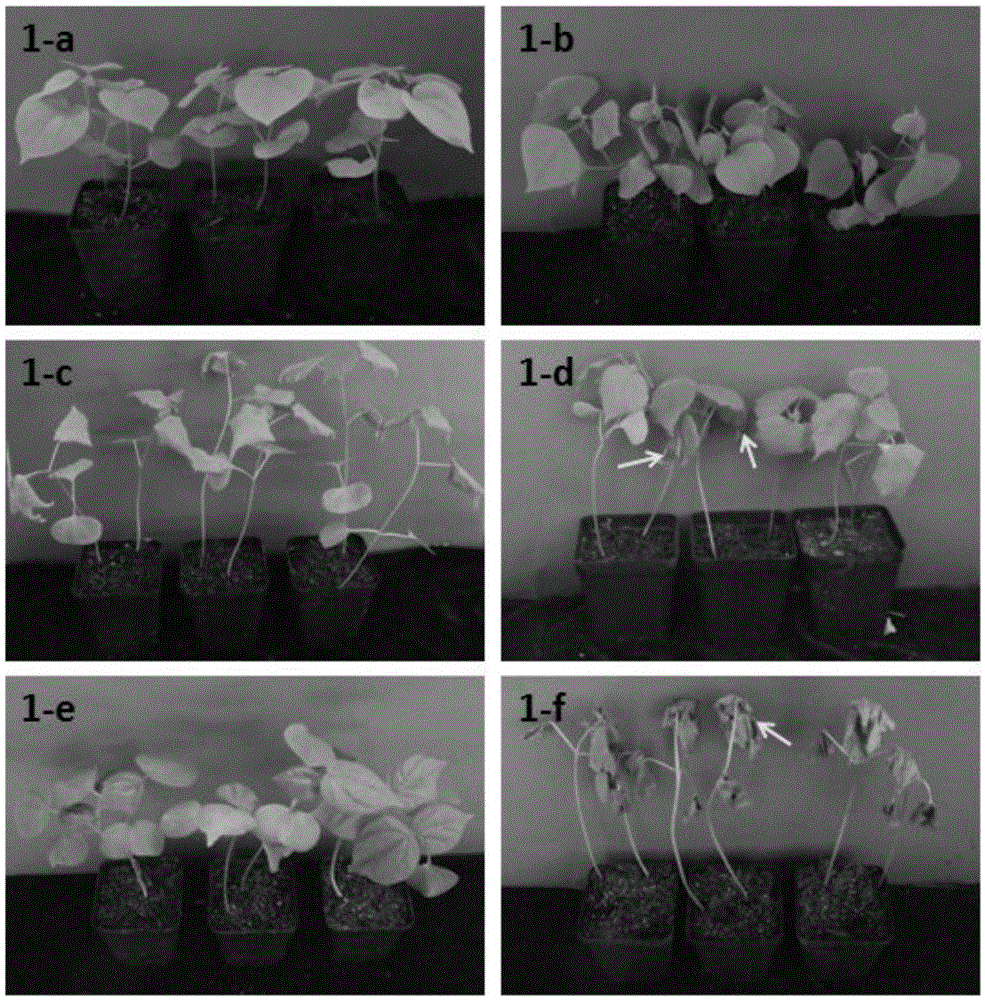Method for identifying low-temperature resistance of wild cotton in seedling stage
An identification method, wild cotton technology, applied in the fields of plant physiology and crop cultivation, can solve problems such as poor repeatability of experiments, lack of evaluation system, and great influence of personal subjective factors, and achieve reliable, objective and low-error results Effect
- Summary
- Abstract
- Description
- Claims
- Application Information
AI Technical Summary
Problems solved by technology
Method used
Image
Examples
Embodiment 1
[0025] Embodiment 1 adopts the wild cotton seedling stage low temperature tolerance identification method to the tolerance of wild cotton (Thurber's cotton, Krautsky cotton, quasi-like cotton, three-cracked cotton, Raymond's cotton) and cultivated cotton (middle 50) Low temperature levels are identified and evaluated.
[0026] 1. Cotton material:
[0027] Wild cotton (Thurber's cotton, Krautsky's cotton, quasi-like cotton, trifid cotton, Raymond's cotton) and upland cotton (Middle 50) were used as reference materials for cultivated cotton. These wild cottons have been reported to have good low temperature resistance.
[0028] 2. Pretreatment of seeds:
[0029] All the seeds with short fluff are delinted with sulfuric acid, and the complete mature seeds with the same size, plump black and no pests are selected. Cut the chalazal end (blunt end) of the wild cotton seed with a single-sided blade to expose the seed kernel.
[0030] 3. Germination:
[0031] Using the sand bed c...
PUM
 Login to View More
Login to View More Abstract
Description
Claims
Application Information
 Login to View More
Login to View More - R&D
- Intellectual Property
- Life Sciences
- Materials
- Tech Scout
- Unparalleled Data Quality
- Higher Quality Content
- 60% Fewer Hallucinations
Browse by: Latest US Patents, China's latest patents, Technical Efficacy Thesaurus, Application Domain, Technology Topic, Popular Technical Reports.
© 2025 PatSnap. All rights reserved.Legal|Privacy policy|Modern Slavery Act Transparency Statement|Sitemap|About US| Contact US: help@patsnap.com

